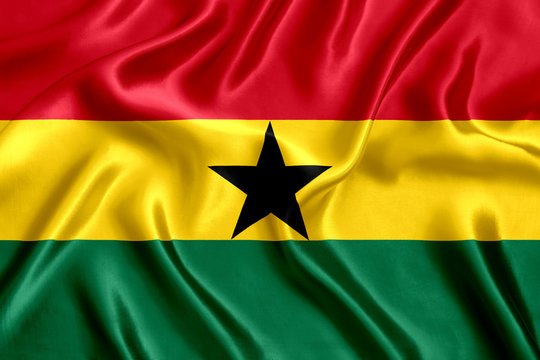
The writer

Fashion is one of the upcoming businesses that have the potential to remarkably impact the world. Fashion is not only about what you wear; it affects your attitude and personality.
It has the power to make you feel empowered and belonging. Ghana is a steadily growing consumer and producer in the fashion industry.
Fashion is a social phenomenon of significant importance. In some ways, fashion helps depict personality through visual representation. It is a form of self-expression. It can be considered as an art, a function, a necessity and an expression. It is something that gives you a feeling of power and control.
A freelance stylist, Shiona Turini, once said, “Fashion is about storytelling through clothing; it’s about the stories behind them and the ones you create around them. It’s a cultural influence, backstory, or intellectual touchpoint that you can trace back to what you’re wearing. We use it to escape the mundane, to embrace and celebrate tradition. It’s about a sense of history and pride, and it embodies a greater sense of purpose than just a garment tossed on to cover bodies”.
Fashion in Ghana
Ghana has always been fashion-forward. Even though there has been considerable western influence in the field of fashion, the country has always tried to stay true to its authentic style. Due to the absence of written documentation of the history of fashion in Ghana, the history of fashion is only spoken about.
The history of fashion, however, dates back to pre-colonial times. The development of fashion started when the colonialist introduced clothes with prints and designs as well as the plain-coloured fabrics. The country has played a major role in influencing fashion in today’s world. The use of bold colours and a variety of fabrics is what makes their designs and style stand out.
Although foreign influence has changed our style of dressing, some people in Ghana still dress in their traditional style. Most of our clothes are hand-made. They are hand-woven, hand-dyed, and hand-sewn by professionals.
One of the most widespread methods of production is weaving. Locals used wooden handlooms to produce intricate patterns. Rafia fiber, which was obtained from a type of African palm tree, was used for this. We still use the method of weaving to produce our traditional clothes, including Gonja and Kente.
Choices and preferences
Ghanaians prefer sturdy fabrics that are rich in colour and detail. Kente, the traditional form of clothing made by the Akan people, is still worn today. Kaba and Slit are popular among the woman. This consists of a long wrap skirt called the Slit and a top called Kaba. This customary garment is a very symbolic outfit as it is strongly associated with our Ghanaian ladies.
Men wear a smock. A smock is a top usually designed with traditional symbols. The older generation tends to wear more traditional clothes, while the younger generation tends to wear western clothes.
The foreign influence has greatly impacted Ghana in recent times. As the youth took preference to foreign and imported clothes, the sales of locally made clothes started declining. Most people prefer imported clothes which are owned by major selling brands in the world.
The fashion industry in Ghana has experienced numerous challenges and evolution, but has remained true to its traditional designs, and delivering these in runways and fashion events.
The industry has provided the world with some of the most influential fabrics sold.
With African wax prints and fabrics getting exposure around the world, we have seen the rise in more Ghanaian designers who are doing well in the industry. The traditional fiber that was used for only making Slit and Kaba is now used to make dresses for daily use.
Fashion instrumentality in COVID fight
For example, in the epoch of the COVID-19, the fashion industry aided the fight against the pandemic in Ghana. Truth is, the creativity and innovation some local fashion designers attached to the production of face masks in the country gave the needed push to win the fight against the spread of the coronavirus in Ghana.
When wearing of face mask was first mentioned by the World Health Organisation (WHO) as one of the means of preventing the spread of the virus, the initiative was met with confusion as it was assumed the act was only necessary for frontline health workers coming into direct contacts with affected victims.
In the process, a call on the general public to also protect themselves with a face mask was relegated to the background.
Even President Akufo-Addo’s announcement of compulsory wearing of the mask did not receive much attention until glamorous designs of face masks started flooding the market. In the quest of fashion designers to join the fight against the virus, they introduced creativity to the dresses they produced. Matching stylish masks and attire became prevalent. And it is wise to add creativity when producing something.
However, while Ghana’s style industry is increasing in global acknowledgment, it definitely imports more clothes than it sends out. Reports indicate that about 60% of Ghanaians wear second-hand garments imported from Europe and the United States.
People preferably purchase second-hand dresses over those managed with pieces of clothing with poor fit. Poor-fitting and quality of clothing made locally are among the major issues bedeviling the local fashion industry.
Due to the ingenuity of local fashion designers who are fearlessly fashioning African fabrics in western styles, the clothes have a broader and international appeal. But the Ghanaian dress is simply western-style translated in African print.
Fashion designers, brands
Many renowned fashion designers hail from Ghana. These brands have made a huge impact on the fashion industry in the world. Some of the fashion brands who have made their mark on a global scale are April Rust, Atto Tetteh, Denkyi, Duaba Serwa, Citizins, and Virgil Abloh.
Some fashion brands that truly stand out due to their sustainable methods of production are Studio One Eight Nine, Larry Jay, Osei Duro, and Jermaine Bleu. These brands aim to cater for the fashionably conscious individuals, and ensure that it is ethically and socially responsible to its environment. Some environment-friendly and sustainable processes they use include dying, weaving, block-printing, brass cutting, hand knitting, quilting, and soft sculpture.
These brands also prioritise social responsibility and transparency in their projects, preferring to work collaboratively with a wide range of professionals, designers, and artists. Most of their production work is done in small shops in Ghana.
We can also take a look at West Africa’s leading print and textiles brand – GTP. It is the first indigenous Ghanaian textile brand launched unto the Ghanaian market in January 1966 by the late Osegyefo Dr Kwame Nkrumah, Ghana’s first President.
In May 2022, GTP, Ghana’s timeless fabric producer, styling customers and clients over the past 56 years, relaunched its heritage print – GTP Adepa. GTP Adepa Premium is basked in the touch of intricate, colourful designs, authentic original designs, and improved fabric quality and pure elegance.
Through Adepa Premium, GTP’s most celebrated fabric offering , Tex Styles Ghana is to “bring African premium fashion to the world,” presenting customers and designers with colourful patterns and motifs, appealing to the traditional matured woman, while attracting a new generation of women with a discerning taste for real African prints.
Big competition
A great competition is set among fashion industries in the developed and the underdeveloped world, causing the most vulnerable local industries to collapse. The fashion industry of Ghana is not exempted in this regard, with the independent fashion designers being the most affected. Their businesses have been crippled by the influx of foreign clothes and textiles on the Ghanaian market.
The drastic increase of smuggled cheap imported dress fashion products on the Ghanaian market posed a huge threat to the local brands.
Since the products are not tested for quality and the required taxes imposed on them, they are sold in the market and are sold at very low prices that compete strongly with the local products. This unfair competition has had serious consequences for fashion businesses.
Conducive environment
Ghana is a great place for production right now. Due to its enormous size of the market and their simplicity in doing trade with foreign countries, Ghana is now one of the top African countries to visit on various business arenas today.
For the fashion industries, there are many skilled professionals, small shops, small production units, and high opportunities. This is great for large retailers as well as small SME businesses to produce in and source from.
The government has highly invested in this. They strive to make Ghana one of the most business-friendly nations in Africa. They aim to improve socio-economic development and prosperity for all along with ensuring that all the production in Ghana is sustainable and eco-friendly.
The writer is a student of the Ghana Institute of Journalism (GIJ). Writer’s email:mildred.danelson@gmail.com.







